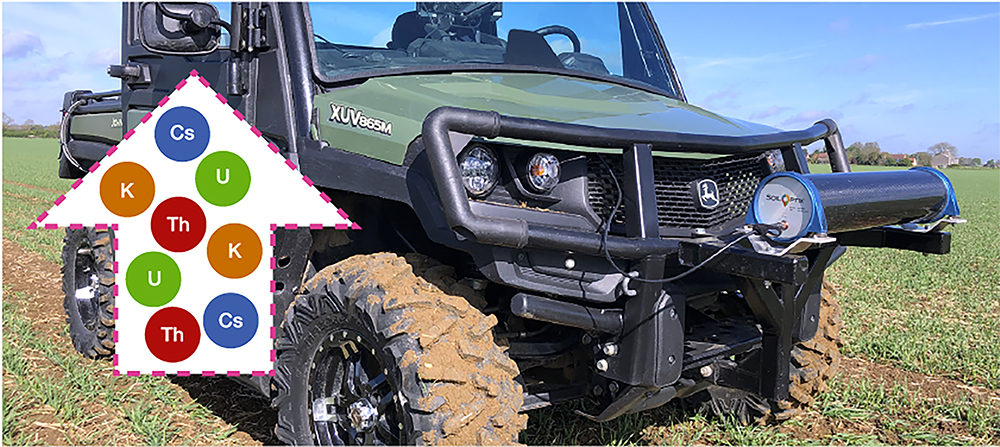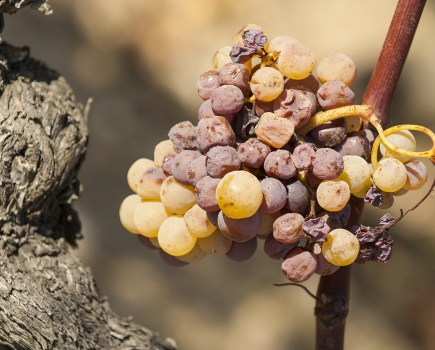Tim Kerr, fertiliser specialist for Hutchinsons turns his expertise to vines.
• www.hlhltd.co.uk • nick.rainsley@hlhltd.co.uk • 07909 686866
The wet autumn will have impacted on crop nutrient availability into next spring. After excessive rainfall, lower levels of nitrogen will be seen. Soil mineral nitrogen can be measured to make necessary adjustments.
Although nitrogen requirement by vines isn’t high, it’s a difficult element to hold in soils over winter, particularly soils with low cation exchange capacity. Light soils, which are low in clay and/or organic matter, have low resilience to hold nitrogen reserves, even with additional nitrogen from decaying vine leaves.
Soil pH is an important driver in nutrient availability so shouldn’t be overlooked. Although there are a number of vineyards grown on chalky soils, a number are not. Granular lime amelioration can prove beneficial to the vine, or if the soil is of high pH extra, iron can be applied.
Site history and local knowledge will also play a part in deciding if early spring nitrogen is required. April would be the normal time to apply a nitrate-based fertiliser. A product such as calcium nitrate, where nitrogen is in nitrate form, delivers this nutrient as a molecule that is immediately available for plant uptake. A product like urea has to undergo several chemical changes, reliant on bacterial activity in warm soils, to become available, and also carries a greater likelihood of being subject to loss due to volatilisation as ammonia, so its use should be avoided.
Both potash and magnesium are, however, taken up by roots through diffusion in the soil. The rootstock SO4, one of the UK’s major rootstocks, appears to be unable to take up sufficient quantities of magnesium from the soil, especially when young. As a result, extra foliar sprays are likely to be needed. Foliar applications should not be seen as a substitute to addressing magnesium levels in the soil as it can be difficult to apply enough, and to promote good enough uptake, so soil applications should not be overlooked. Excessive soil potassium levels can also inhibit magnesium uptake, an example of an ‘induced deficiency’, so keep an eye on the ratio of the two elements when interpreting your soil analysis.
Grapevines have a relatively high potassium requirement, with potassium being a key driver to optimising quality and yield, and is removed from the vineyard in the harvested crop at a rate of between 2 and 3kg per tonne of fruit. Studies have shown getting the correct balance between nitrogen and potassium decreases Botrytis incidence.
One useful product to help manage potassium (K) and magnesium (Mg) requirements is a relatively new fertiliser called Potash Plus. This is a granular compound made up of muriate of potash and polysulphate. The resulting Potash Plus analysis is a useful balance of K, Mg, Ca and sulphur. (37% K2O, 8% CaO, 3% MgO and 24% SO3.) The sulphur in Potash Plus is derived from the polysulphate, a complex mineral of calcium sulphate, magnesium sulphate and potassium sulphate. This gives a steady release of nutrients through the season, making it an ideal fertiliser for vines.
Phosphorus, taken up as phosphate, is not needed in large quantities by vines. Only 10 kg/ha is used during the season and only 0.3 to 0.4 kg/tonne is removed in the harvested crop, but its still an essential nutrient and deficiency will result in reduced crop health and yield. Phosphate reserves are normally tightly held in soils and so not subject to loss by leaching, but can be lost by soil erosion, and on reaching rivers or lakes are very harmful. Growers therefore need to guard against soil erosion, particularly where weeds are controlled by mechanical cultivation on slopes, and the risk of run-off during heavy rain is increased.
Growers can use the new TerraMap soil scanning service to gauge nutritional needs in vineyards. This high definition soil scanning system records over 800 data points per hectare. Where new vineyards are considered, it allows thorough understanding of the site and by linking to the Omnia system, growers can make a precise nutrient map. In established vineyards it can indicate why vines are struggling and allows application of variable rates of fertiliser.




